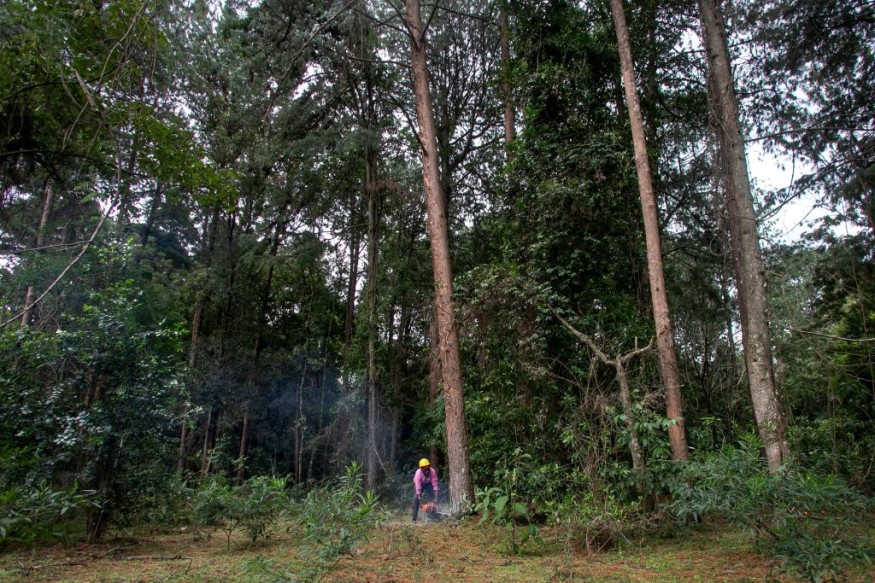A new study discovered that the population of grey-necked rockfowl suffered a declining population.
Researchers noted the smaller suitable habitat for the rare bird due to habitat fragmentation and forest cover loss.
Scientists have been studying the distribution and habitats of birds, including the grey-necked rockfowl. Understanding their environments is vital for researchers to develop conservation plans for threatened birds.
The Grey-necked rockfowl (Picathartes areas) is considered nearly threatened due to habitat loss threats. They are known for their noticeable gray back and blue-red bald head. It is considered endemic to Central America.
Threatened Gray-Necked Rockfowl

The study was published in Bird Conservation International by experts from Cameroon Biodiversity Association (CAMBIO) in partnership with the San Diego Zoo Wildlife Alliance.
The researchers aimed to discover the extent of the impact of habitat loss and forest cover loss on the threatened Grey-necked rock fowl.
Furthermore, the study noted that the suitable habitat for the threatened bird is smaller than expected. The team found about 17,327 square kilometers, which is essential for a bird's desired habitat.
According to the study's co-author Dr. Ekwoge Abwe, the forest cover loss affects the endemic and endangered species in Central Africa. Biodiversity is a concern that is driven by climate change.
Dr. Abwe is a Scientific Program Manager for San Diego Zoo Wildlife Alliance.
The study highlighted the importance of changing the status of birds to Vulnerable from the International Union for Conservation of Nature (IUCN) Red List of Threatened Species.
The recent report emphasized that changing the bird conservation status could be helpful for the conservation of their species.
To further observe the bird species, the researchers said they used the 339 records of the occurrence of the threatened Grey-necked Picathartes. They combined the environmental variables to illustrate the global distribution of the birds better.
Dr. Abwe explained that the Gray-necked rock fowl is an essential indicator for a healthy forecast, adding that the Grey-necked Picathartes requires steep slopes and forest cover.
Amazing Facts about Grey-necked rockfowl
According to World Land Trust's report, the grey-necked rockfowl can also be found in cliffs and rock areas. They are sensitive in terms of breeding, requiring below-closed canopies in rainforests. They can create a nest using dead leaves or dry grass during nesting that could be around August and October.
The grey-necked rockfowl likes to feed beetles, earthworms, snails and earthworms.
Furthermore, the bird is also threatened by human disturbance and bird hunting.
Did you know?
In the recent study in the Journal of Applied Ecology, the Purple-Crowned Fairy-Wrens population in Northern Australia is at risk due to wildfires. The report said the bird habitat is sensitive to dry and drought conditions, even in low-intensity fires.
Related Article : Saving Colorful Guam Kingfisher: Scientists Hopeful To Conserve Declining Bird Population
For more similar stories, don't forget to follow Nature World News.
© 2025 NatureWorldNews.com All rights reserved. Do not reproduce without permission.





